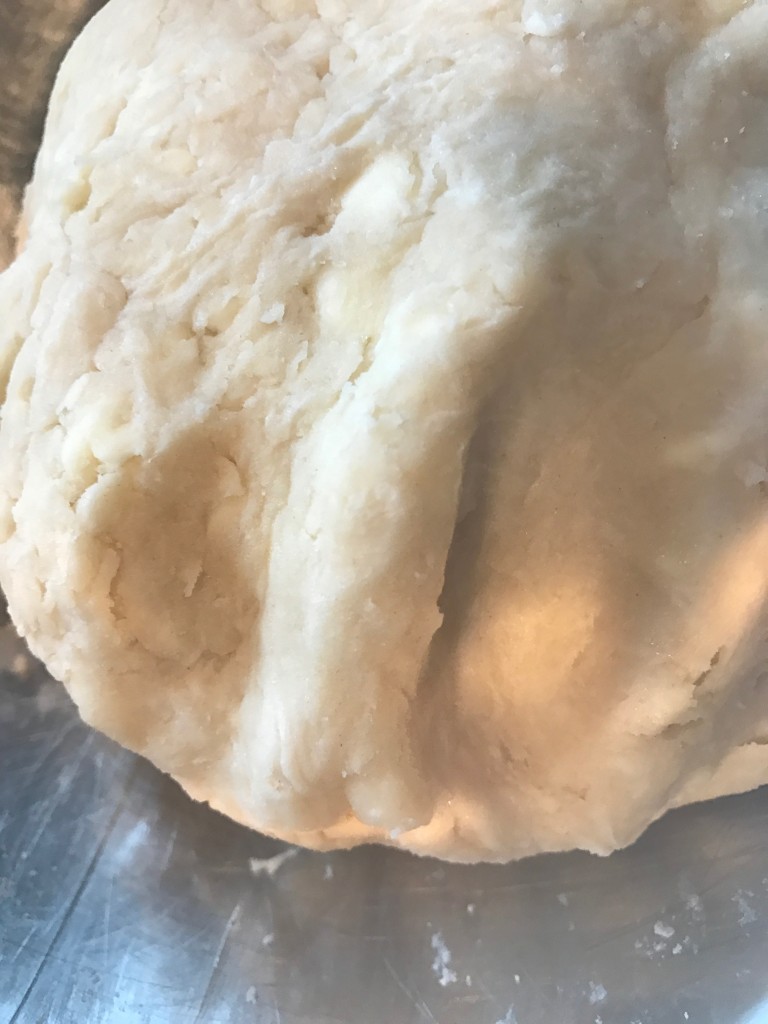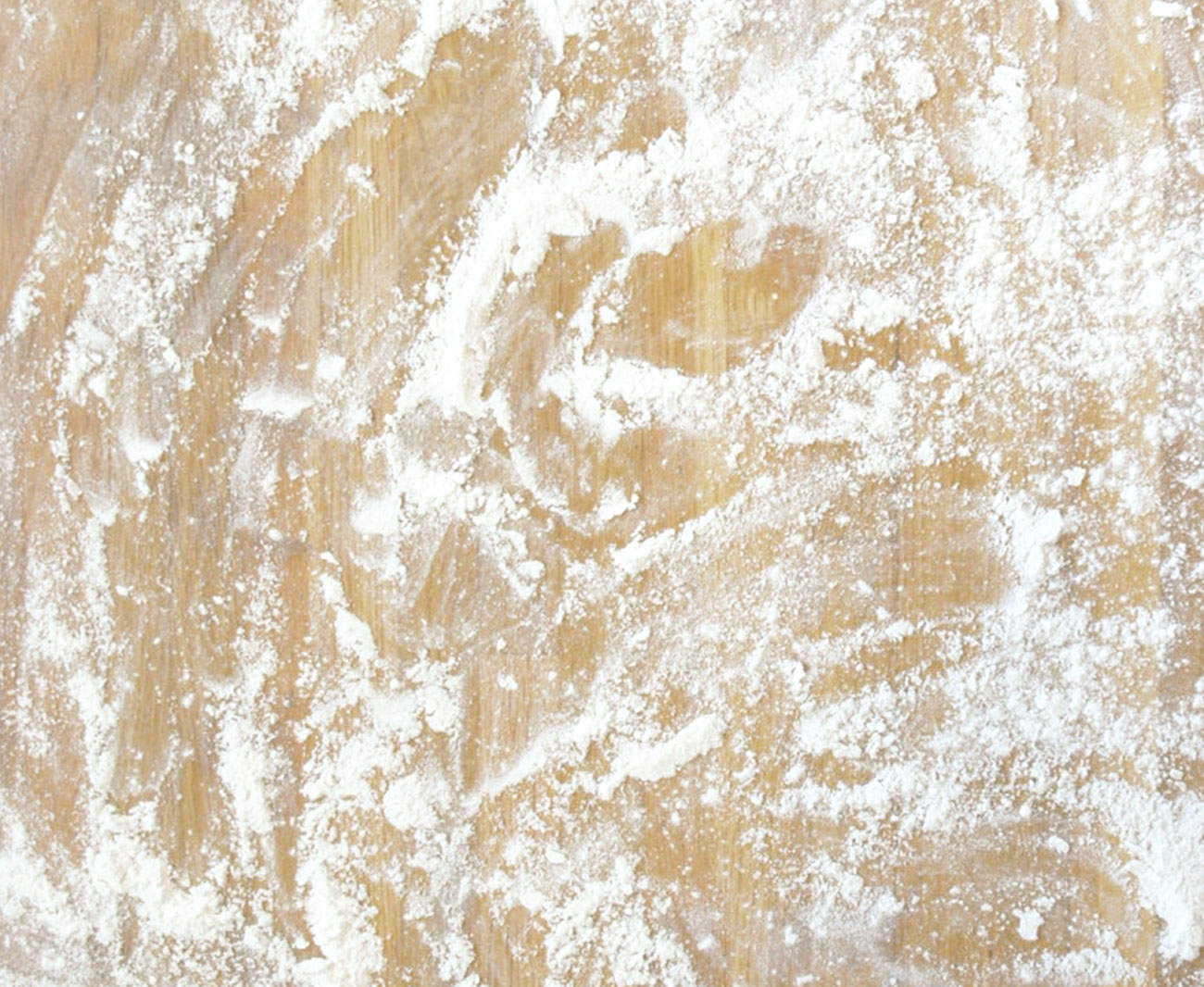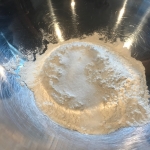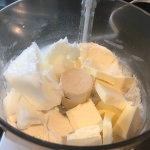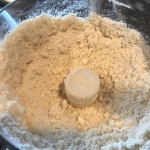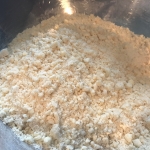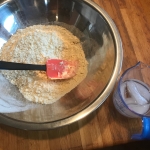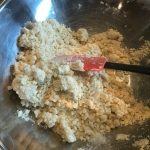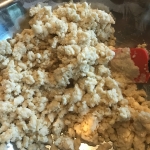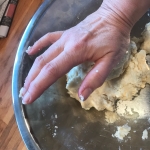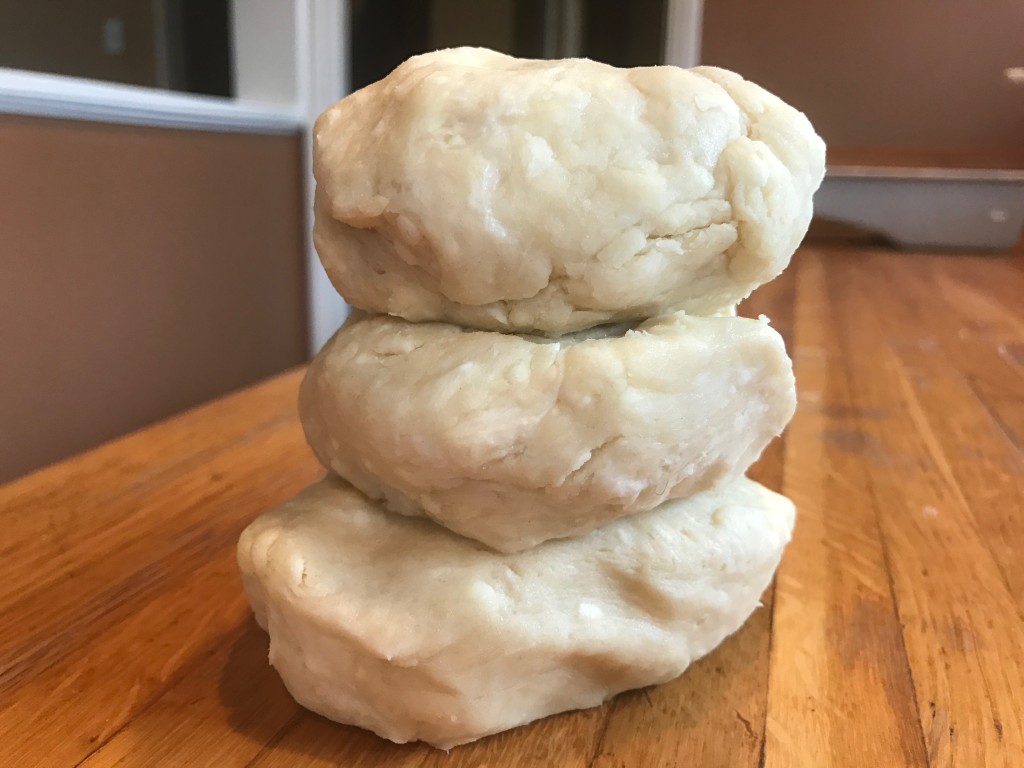 I’ve seen the light: You can make great pie dough in the food processor.
I’ve seen the light: You can make great pie dough in the food processor.
Anyone who’s baked with me will [gasp!] to hear of my conversion. As long as I’ve been making pie, I’ve preached the wisdom of making dough completely by hand, avoiding the Cuisinart. But I’ve discovered a recipe and method that come out terrific–consistently–in the food processor. So I’ve got to share it with you.
Making dough this way requires you to weigh your ingredients. So if you’re scale-phobic, it’s not for you. But before you jump in and roll your eyes, and tell me how fussy weighing seems, let me tell you this: it’s so much easier. Yes. I kid you not. No scooping and leveling flour. No more variation in the size and texture of your dough. There’s some Fancy Science here that makes 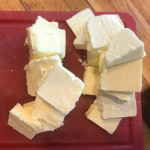 the dough come out great every time.
the dough come out great every time.
Hey, no one was more surprised than I was to be won over by the Cuisinart approach. I’m telling you, I LOVE this method. I won’t completely abandon hand-made–there’s nothing quite as meditative as working lovely creamy butter into silky flour with your fingers–but this new method has captured my heart big-time.
I’m using a combination of Michael Ruhlman‘s dough recipe and J. Kenji López-Alt‘s Cuisinart method. I love the simplicity of Ruhlman’s recipe: 3 parts flour, 2 parts fat and 1 part water. It’s easy to scale up or down, and I find it produces a dough that’s slightly more moist than my stand-by recipe, without risking shrinkage while baking.
With Ruhlman’s 3-2-1 formula, I use 12 ounces of flour, 8 ounces of fat–all butter, or a combo of butter and leaf lard–and 4 ounces of water. That makes 24 ounces of dough, just the right amount for two big fat disks (the top and bottom crusts of a hefty deep-dish pie) or three regular-size disks (enough for one single-crust and one double-crust pie in standard 9-inch pie pans).
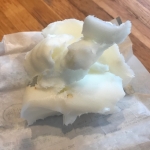 Lopez-Alt, the food-chemistry genius from Serious Eats, gets his consistent results by cutting the fat into the flour in two distinct phases: most of the flour, the fats, and then the rest of the flour. This two-step approach coats the particles of fat with flour, which lets the dough better manage the water absorption, as he explains on Food 52.
Lopez-Alt, the food-chemistry genius from Serious Eats, gets his consistent results by cutting the fat into the flour in two distinct phases: most of the flour, the fats, and then the rest of the flour. This two-step approach coats the particles of fat with flour, which lets the dough better manage the water absorption, as he explains on Food 52.
You don’t finish the dough in the Cuisinart, though. When it’s time to add the water, you dump the dough into a bowl and do that by hand, using a rubber scraper to bring it together. I throw in a quick little knead, too, folding the dough over on itself a few times to create some layering and a supple texture.
So let’s walk through this nice and easy-like, with photos. Full recipe & directions are at the bottom.
Weigh the flour and put it in a large mixing bowl. Add the sugar and a dash of Kosher salt. Put two-thirds of the dry ingredients into the Cuisinart and buzz a couple of times to mix. Then add the butter and leaf lard. Buzz until there is no dry flour left and the dough is just beginning to clump up, about 25 buzzes.
Add the remaining one-third of the dry ingredients. Buzz just a few more times. Dump it back into the mixing bowl. Measure the water into a liquid measuring cup and add ice. Drizzle a little over the dough, using a rubber scraper to stir it in with as few strokes as possible. Add water, in a few additions, until the dough is moist and chunky, and all the water has been added.
When all the water has been added, you’ll see the dough is nice and moist and has come together in chunks. Using both cupped hands, bring the dough together in the center of the bowl and press gently to form a ball. Knead briefly, folding the dough over on itself a few times.
- All the water is added and dough is nice and moist.
- Bring the dough together into a ball.
- Knead the dough briefly…
- … folding it a few times to create nice layers.
Now you have the nicest, richest, sexiest, most pliable dough ever! Enjoy, and tip your hat to Kenji and Michael!